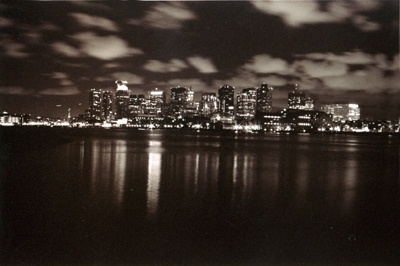All Nonfiction
- Bullying
- Books
- Academic
- Author Interviews
- Celebrity interviews
- College Articles
- College Essays
- Educator of the Year
- Heroes
- Interviews
- Memoir
- Personal Experience
- Sports
- Travel & Culture
All Opinions
- Bullying
- Current Events / Politics
- Discrimination
- Drugs / Alcohol / Smoking
- Entertainment / Celebrities
- Environment
- Love / Relationships
- Movies / Music / TV
- Pop Culture / Trends
- School / College
- Social Issues / Civics
- Spirituality / Religion
- Sports / Hobbies
All Hot Topics
- Bullying
- Community Service
- Environment
- Health
- Letters to the Editor
- Pride & Prejudice
- What Matters
- Back
Summer Guide
- Program Links
- Program Reviews
- Back
College Guide
- College Links
- College Reviews
- College Essays
- College Articles
- Back
Bigger is Better?
Everyone knows what a megalopolis is, right? For those who are fairly clueless or need to clarify, a megalopolis is a large expanse of nothing but city that stretches as far as the curve of the Earth, if viewed from above. Only two known cities in the world have been granted the extraordinary honour of being dubbed a megalopolis. The two countries would be Tokyo and New York. Many other countries who have the land space will sometimes strive to attain the title of a megalopolis, seeing it as a sign of achievement and progress. Hardly anyone would stop to think the negative effect a megalopolis would have on the environment.
For starters, think of all the trees and natural wildlife that have to be cleared in order to build such a large expanse of city. Save for several small preserves, there is a notable lack of the physical environment. Multitudes of animals, birds and other critters would find themselves in a frenzied mass exodus as their homes are destroyed, scurrying around the land which would now ‘belong’ to us humans. We may call them pests, rummaging through our garbage, being a general nuisance, and ‘invading’ our living space. In the plain truth, we are the invaders here, the ‘pests’ or ‘parasites’. We take endlessly from the Earth, but what the environmentalists are doing are simply not enough to keep up. Slowly but surely, we are depleting our own supply of natural resources. A lack of trees would also equal to a lack of oxygen, and an increase in carbon dioxide. Global warming is partially caused by this, the carbon dioxide that traps the heat of the sun on Earth, thereby creating a green house effect.
The problems written above, however, are just the tip of the iceberg. Think of the masses of people living in a megalopolis, all the waste, rubbish and excrement. No, do not wrinkle your nose at this, it is a true problem. Where would they go? The sewers of the city, perhaps? But the sewers have to go somewhere, and the most convenient location is the sea. The toxic and pollution from the sewage waste will slowly affect the waters around the land, resulting in inhabitable seas, mutated sea life etc. The fish, which swim in the polluted waters, are regularly caught by fishing trawlers and such, ending up on a plate, be it at home or a restaurant. Now would you still be willing to eat the fish once you know what it’s been swimming around in?
The electricity and water usage of the megalopolis would be extremely high, considering the population. Generators and plants will have to be set up all over the country to provide. But what about the cost and damage to the environment they may cause? Let’s take a quick review of the crocodile crisis in Kruger National Park, for example. The crocodiles all died of pansteatitis, which results in the oxidisation of the body’s fat deposits, causing them to harden and render the crocodiles immobile. The crocodiles then either die of starvation or drown. Pansteatitis is linked to massive fish die-offs as the crocodiles are exposed to rancid fish oils, which cannot be broken down by their bodies. This was a mystery, as very little to none dead fish were found. However, they found out that a construction of a dam downstream as curbed or limited the river flow, causing toxics from factories upstream to settle on the riverbed. Catfish, who are bottom feeders would ingest the toxic and fall ill. Because of the illness, they make easy prey for the crocodiles, which will contract pansteatitis. The tragedy of the Kruger crocodiles, with over a hundred crocodiles dead, is one of the many examples of negative impacts we men have made on the environment.
My purpose in writing this article is to not wholly condemn the megalopolis’ in the world, but just to simply ask you to consider this: Are you sure that bigger is always better?

Similar Articles
JOIN THE DISCUSSION
This article has 0 comments.
